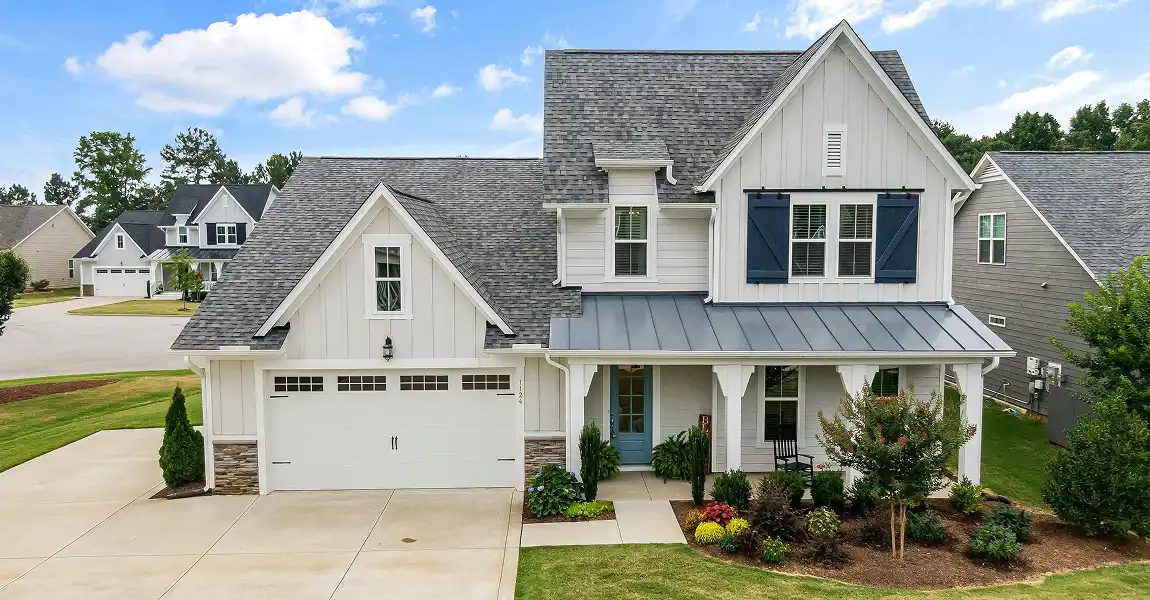Many homeowners focus on shingles, flashing, and gutters when thinking about roof maintenance, but one of the most overlooked factors in roof longevity is attic ventilation. A poorly ventilated attic can lead to excess heat buildup, trapped moisture, and long-term structural damage, all of which can shorten the lifespan of your roof.
Proper attic ventilation is not just about maintaining airflow—it protects your roofing system, improves energy efficiency, and prevents costly repairs. For homeowners in North Carolina, where summers bring high humidity and winters bring fluctuating temperatures, ensuring your attic has the right ventilation can make a significant difference in how long your roof lasts.
In this guide, we’ll explore the connection between attic ventilation and roof lifespan, the common signs of poor ventilation, and how professional attic ventilation services can help extend the life of your roof.
How Attic Ventilation Affects Roof Lifespan
Your attic plays a bigger role in your roof’s health than you might realize. Without proper ventilation, hot air and moisture get trapped inside, leading to conditions that can weaken your roofing materials over time.
What Proper Ventilation Does for Your Roof:
- Prevents heat buildup in summer – High temperatures in the attic can cause shingles to deteriorate faster.
- Reduces moisture accumulation – Excess humidity can lead to mold, mildew, and wood rot.
- Helps regulate indoor temperatures – Balanced airflow reduces strain on your HVAC system.
- Prevents ice dams in winter – Proper ventilation stops warm attic air from melting snow unevenly, preventing ice buildup along the roof’s edge.
North Carolina Insight:
With hot, humid summers in Charlotte and Raleigh, attics without proper ventilation can reach temperatures well over 130°F, accelerating the breakdown of roofing materials.
Signs of Poor Attic Ventilation
If your attic doesn’t have adequate airflow, your home may show warning signs that something isn’t right. Recognizing these signs early can help prevent expensive roofing repairs.
Common Indicators of Poor Attic Ventilation:
- Excessive heat in the attic – If your attic feels extremely hot even on mild days, poor ventilation may be to blame.
- Mold or mildew growth – Moisture buildup can lead to mold, which can affect both your roof and indoor air quality.
- Peeling paint or warped wood – Trapped humidity can cause paint to blister or wood to warp inside your home.
- Uneven or curling shingles – Heat trapped under the roof can cause shingles to buckle, curl, or crack, leading to premature roof failure.
- Ice dams in winter – If ice forms along your roof’s edge while the rest of the roof is clear, it may mean your attic is too warm.
North Carolina Insight:
Homes in Fayetteville and Greensboro with older roofs and poor ventilation often experience mildew growth in attics, especially during humid months.
How Poor Ventilation Can Shorten Your Roof’s Lifespan
A roofing system is designed to last 20 to 50 years, depending on the materials used. However, without proper attic ventilation, a roof may need premature replacement due to heat and moisture damage.
Problems Caused by Poor Attic Ventilation:
- Shingle deterioration: Excess heat weakens roofing materials, leading to cracking and fading.
- Wood rot: Moisture buildup causes roof decking and rafters to weaken over time.
- Rust and corrosion: Metal components, like nails and flashing, can corrode due to trapped humidity.
- Higher energy bills: Poor ventilation makes your air conditioning work harder, increasing cooling costs.
North Carolina Insight:
In humid areas like Wilmington, homes without proper ventilation are more susceptible to mold growth and wood decay, leading to costly repairs.
How Proper Attic Ventilation Saves You Money
Investing in proper attic ventilation doesn’t just protect your roof—it can save you money in the long run by improving energy efficiency and reducing the need for major repairs.
Financial Benefits of Good Attic Ventilation:
- Lower energy bills – Proper airflow helps regulate your home’s temperature, reducing the strain on your HVAC system.
- Fewer roof repairs – Preventing heat and moisture damage means fewer costly fixes over the years.
- Longer roof lifespan – A well-ventilated attic helps your roof reach its full lifespan.
- Better home resale value – A roof with proper ventilation is a strong selling point for potential buyers.
North Carolina Insight:
Homeowners in Durham and High Point who invest in professional attic ventilation services often notice a 10-20% reduction in summer cooling costs.
Types of Attic Ventilation Systems
There are two main types of attic ventilation: passive and active systems. The right choice depends on your home’s design, climate, and roofing structure.
Passive Ventilation (Natural Airflow):
- Ridge vents – Installed along the peak of the roof to allow warm air to escape.
- Soffit vents – Located under the eaves to draw in cooler air.
- Gable vents – Placed on the sides of the attic to improve cross-ventilation.
Active Ventilation (Powered Systems):
- Attic fans – Electric or solar-powered fans that help push hot air out.
- Turbine vents – Wind-powered vents that pull air out as the wind blows.
- HVAC-integrated systems – Some homes have ventilation connected to their heating and cooling systems.
North Carolina Insight:
In areas with high humidity like Winston-Salem, combining ridge vents with attic fans can significantly improve airflow and prevent moisture problems
How Professional Attic Ventilation Services Can Help
While some ventilation improvements can be done DIY, a professional assessment ensures your attic gets the right balance of airflow. A roofing expert can determine if your home has enough vents, if they are positioned correctly, and whether additional ventilation is needed.
What a Professional Roofing Contractor Can Do:
Evaluate your current ventilation system and identify issues.
- Install ridge vents, soffit vents, or attic fans to improve airflow.
- Check for mold, rot, or moisture damage and recommend solutions.
- Ensure your ventilation system meets local building codes.
North Carolina Insight:
Many older homes in Hickory and Goldsboro were built before modern ventilation standards. Homeowners who upgrade their attic ventilation systems often find their roofs last significantly longer with fewer repairs.
Protect Your Roof with Proper Ventilation
Attic ventilation is one of the most important but overlooked aspects of roof care. Without proper airflow, heat and moisture can cause serious damage, leading to expensive repairs and premature roof failure.
Key Takeaways:
- Proper attic ventilation prevents heat and moisture buildup, extending your roof’s lifespan.
- Signs of poor ventilation include high attic temperatures, mold growth, and curling shingles.
- Investing in ventilation upgrades can reduce energy costs and roof maintenance expenses.
- Professional attic ventilation services can improve airflow and prevent long-term roofing issues.
If you’re unsure whether your attic has the right ventilation system, contact Citadel Contracting today. Our team offers attic ventilation services to help protect your roof and home for years to come.










